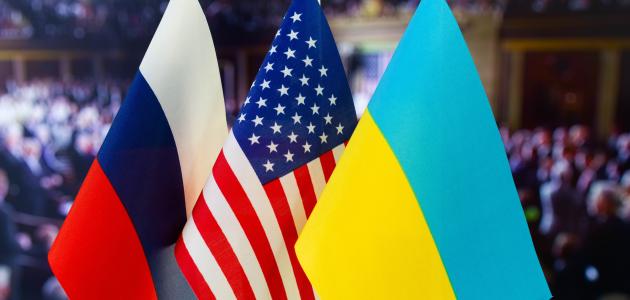- Security & Defense
- Military
- Confronting and Competing with China
- Revitalizing American Institutions
Dr. Vivek Lall, a distinguished visiting fellow at the Hoover Institution, is the chief executive of General Atomics Global Corp.
A bloated and slow-moving bureaucracy has long hobbled America’s defense industry and, with it, the country’s ability to effectively pursue its security goals. Nowhere is this more evident than in the US approach to Ukraine, where a tangle of outdated regulations and entrenched institutional inertia not only undercuts Washington’s stated support for Ukraine but also denies the US defense community the battlefield experience needed to refine weapons in this war and prepare for the next.
Since Russia’s 2014 annexation of Crimea, US officials have repeatedly pledged support for Ukraine. However, those promises have often been undermined by the same bureaucratic dysfunction plaguing the broader defense ecosystem. Aid is routinely slow-rolled, depriving Ukraine of critical systems when they’re needed most. Until 2018, Washington outright banned weapons sales, prompting then-president Petro Poroshenko to lament that Ukraine “cannot win a war with blankets.” More recently, the transfers of HIMARS artillery, M1 Abrams tanks, and F-16 jets have followed a now-familiar pattern: months of political wrangling and institutional delay.
This gridlock isn’t just detrimental to Ukraine; it also harms the US defense industry. Firms have been prevented from deploying systems in real combat and denied a chance to gain the operational experience that drives adaptation and innovation, both of which are essential to future readiness.
Even when policymakers break the logjam, the path toward transferring military aid is anything but clear. That’s because there is a veritable forest of red tape that industry and government alike must navigate.
Although there are many obstacles, one of the most important is the Foreign Military Sales (FMS) system, which governs several of the billions of dollars in US aid to Ukraine and, beyond that, as much as $120 billion in arms transfers each year. FMS has also become a poster child for government inefficiency. As General Erik Kurilla, commander of US Central Command, testified in June in a House Armed Services Committee hearing, FMS urgently needs to be “rewritten from a blank sheet of paper.” The process is both opaque and glacial. According to Kurilla, “decisions that should take days drag on for months, sometimes a year.”
Why? With as many as twenty government agencies involved and no single entity accountable for performance, the US arms export and transfer processes are detached from both urgency and outcome. The result, seen many times in Ukraine and elsewhere, is predictable: by the time weapons arrive—if they arrive at all—the moment they were meant to shape has often already passed.
The consequences of these restrictions—and Washington’s overly cautious approach—are real. In 2023, General Atomics offered Ukraine its MQ-9 Reaper unmanned aircraft system (UAS) for just one dollar. These MQ-9s, already in service with the United States and eight of its allies, would have significantly enhanced Ukraine’s defense by providing strategically vital surveillance and intelligence-gathering capabilities. Beyond its traditional role, the MQ-9 could also have been modified to solve critical challenges that Ukraine has struggled with serving in a counter-UAS role and operating beyond the reach of Russian air defenses. In short, the MQ-9 could have tilted the odds in Ukraine’s favor. More critically, its deployment would have given the Pentagon a rare opportunity to gather valuable data on how one of its key systems operates in a high-threat environment, experience that could prove critical to the platform’s (and, ultimately, the country’s) success in future conflicts.
But despite Ukraine’s urgent need of and the clear strategic value in deploying the MQ-9, General Atomics’ offer stalled out in the bureaucratic morass described above.
Washington’s inaction left Ukraine bereft of a system it desperately needed. Without the MQ-9, Ukraine turned to less capable, foreign-made alternatives (such as Turkey’s Bayraktar) and lower-end first-person view (FPV) vehicles—neither of which can match the MQ-9. Ultimately, the United States squandered both a strategic opportunity to support an ally and a chance for it to gain valuable operational insights.
While the current Trump administration wisely announced several plans to reform these overly complex processes, the dust is yet to settle. Unfortunately, past efforts paint a worrying trend. Washington has attempted to reform its acquisition processes (including FMS) dozens of times over the years, with little to show for any of that activity. Agencies spend months identifying gaps, drafting recommendations, and outlining reforms—only to stall at the implementation stage. With no clear ownership of the issue and often limited urgency, even obvious fixes are left to gather dust. The result is a broken system that everyone acknowledges but nobody seems willing—or able—to repair.
This must change. With threats to US security mounting, Washington needs to act decisively to overhaul the outdated systems strangling its defense industry. This isn’t just a matter of bureaucratic housekeeping. It’s imperative to supporting the national security of both the United States and its partners.
The timing for action couldn’t be better. Given Ukraine’s success in both defending against Russia’s ongoing offensive and executing Operation Spiderweb, Washington can help Ukraine build on its momentum. With President Trump resuming support of US arms shipments to Ukraine (largely through NATO allies) including the critically needed Patriot missile defense systems, there is further opportunity for policymakers to bolster Ukraine’s defense through regulatory quick wins. For example, Washington has generally restricted its European partners from sending American systems to Ukraine. Relaxing these rules would provide a cost-effective means of both delivering new capabilities to Ukraine while also providing US firms with valuable deployment experience needed to innovate.
Ultimately, the United States must empower itself and its defense industry to meet urgent needs now and prepare for the conflicts of tomorrow. Washington cannot afford to be paralyzed by its own processes. Our adversaries are moving ahead, and they will not wait for America to catch up.

















